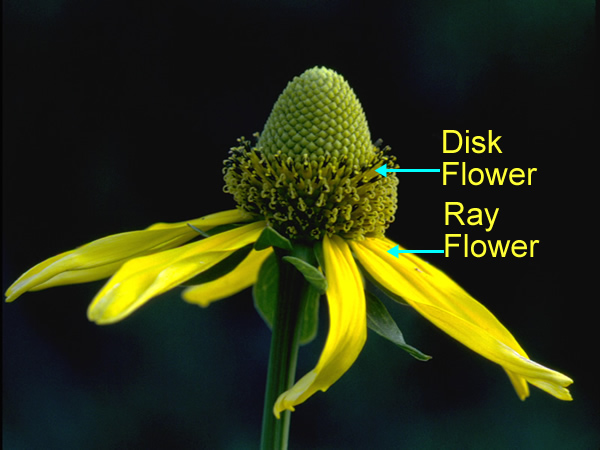“The neighbor across the street, who is a know it all and a Master Gardener, said that coneflowers are a single flower. I thought they were a lot of little flowers. Am I remembering incorrectly from biology class long ago or is my neighbor a plant idiot with a big title? Just wondering. Thank you! Jordie”
___________________________________________________________________
Hi Jordie,
Thank you for your question. Good news: you are right.
As a horticulturist, I interact with folks that garden with various levels of knowledge. However, I think the thing that is most detrimental to gardening the gardener that *believes* they know everything because they are a Master Gardener.
Don’t get me wrong — the Master Gardener’s program is great and has made a lot of advances in educating people. But, as with any subject, you will always have a few bad apples that will are the overly-puffed up ‘expert’ that knows ‘everything’, but really knows nothing. Generally this comes from insecurity and the need to be the best and brightest in the room, no matter what. And deep down, they truly believe they know it all.
What is funny is when you have a conversation with folks like this and they assure you that they know more than you because they are Master Gardener (and have taken 8-18 weeks of training), while you have a Master’s Degree (and 9 years of post-secondary education). You can read more of my thoughts regarding Master Gardeners here.
But I digress. Let’s get back to composite flowers!
Coneflowers (Echinacea purpurea) are a member of the Aster Family (Asteraceae). The is one main key feature to the family: they all have composite flowers. A composite flower seems to be a single flower, but is actually a cluster of many smaller flowers that work together to look like a single large one.
A great example of this is the sunflower (Helianthus annuus). If you look at it closely, you will see that the large ‘center’ of the flower is actually comprised of a ton of little flowers. These flowers are called disk flowers. Each has 5 tiny petals that are fused into a cup-like structure, 5 stamens, and a pistil. Each disk flower makes one seed.
On the outside, in the area that most say are the petals of the ‘single big flower’/composite flower, are the ray flowers. These flowers have all 5 petals fused together to make one huge petal. They also have 5 stamens and a pistil. Like the disk flower, each ray flower makes one seed.
Each species within Asteraceae varies in the amount of disk and ray flowers it has. Because of this, the family is broken down into two subfamilies. In the Dandelion subfamily, you have composite flower that have ray flowers overlapping each other all the way to the center. In the Aster subfamily, you have more traditional composite flowers with the ray flowers at a minimum on the outside. However, the lines between the two subfamilies have been blurred with the advent of plant breeding and the selection of plants with less or more ray flowers, respectively.
Of course, I am sure your Master Gardener friend would poo-poo what I have said because of all the sepals around the underside of the coneflower — surely that would make it a single flower and not a composite flower. Ha! Wrong again. Those are not sepals! They are bracts! Bracts are modified leaves that surround the composite head. A great example of bracts at work are found in artichokes — the bract is what you eat.
If you wish to find the sepals, you would have to look at the ray and disk flowers under a microscope, as the sepals are reduced to hairy pappus (small scales) or are not present at all.
I hope this information helps you out. Please feel free to share this article with your neighbor.
*************************************************************************************************
© Mertie Mae Botanics LLC and Horticulture Talk!, 2014. Unauthorized use and/or duplication of this material without express and written permission from this blog’s author and/or owner is strictly prohibited. Excerpts and links may be used, provided that full and clear credit is given to Mertie Mae Botanics LLC and Horticulture Talk! with appropriate and specific direction to the original content.
